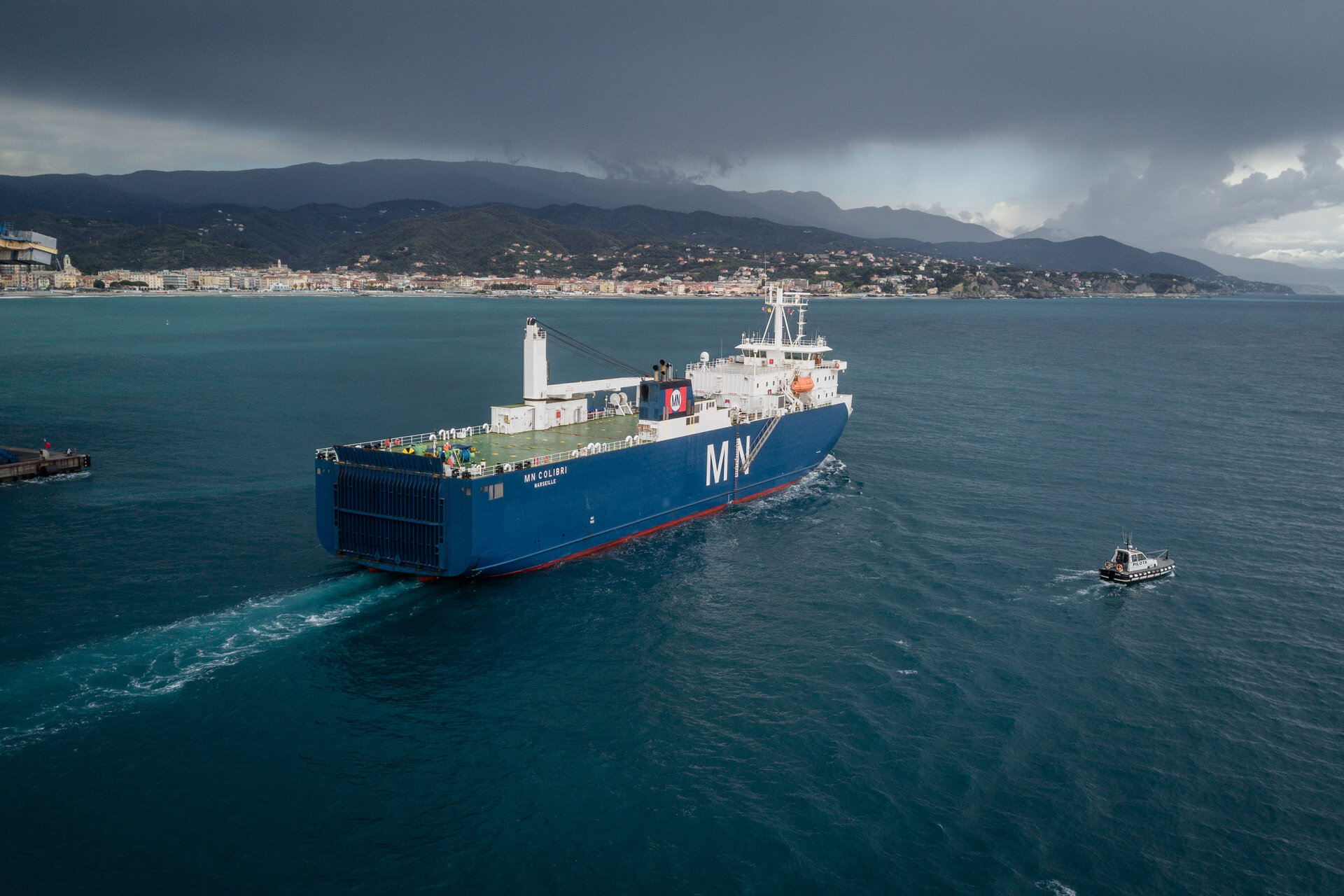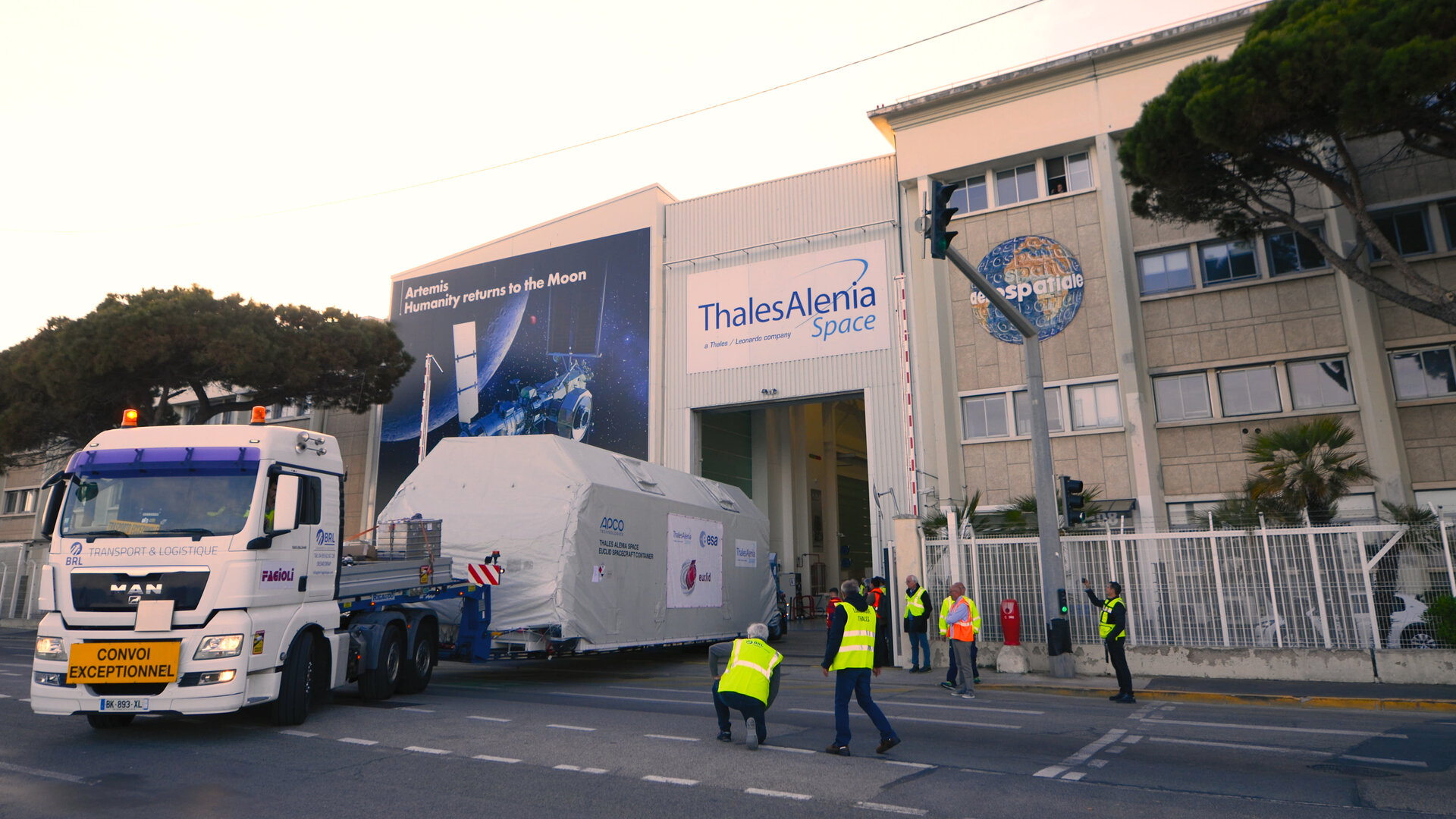Smooth sailing, Euclid
The Euclid satellite embarked on the next leg of the 1.5 million km long journey to space from where it will unlock the mysteries of the dark Universe.
Following extensive environmental and mechanical tests at Thales Alenia Space’s plant in Cannes, the Euclid satellite was transported by exceptional convoy to the port of Savona, Italy, on 14 April. The following day, Euclid set sail to the port near its launch site in Cape Canaveral, Florida.
To keep the satellite safe during the journey, Euclid was placed in a container flushed with nitrogen to maintain a clean room environment. Parameters such as temperature, pressure and humidity are being constantly monitored during travel.
The ship is expected to reach its destination at the beginning of May, getting ready for launch no earlier than this July on a SpaceX Falcon 9 rocket from Florida, USA.
Euclid will travel 1.5 million km from Earth, in the opposite direction to the Sun, to reach its orbit around the Lagrange point L2, joining other missions such as ESA’s Gaia and the NASA/ESA/CSA James Webb Space Telescope.


Access the video
From L2, ESA's Euclid mission will begin the detective work of exploring the dark Universe.
For centuries, astronomers have aimed to learn more about the luminous sources of the cosmos: planets, stars, galaxies, and gas. But these objects make up only a small fraction of what the Universe contains. 95% of the Universe appears to be made up of unknown ‘dark’ matter and energy.
ESA's Euclid mission is designed to map the large-scale structure of the Universe and help us understand these mysterious components: dark matter and dark energy.
Euclid will create the largest, most accurate 3D map of the Universe ever. It will observe billions of galaxies out to 10 billion light-years, across more than a third of the sky. With this map, Euclid will reveal how the Universe has expanded and how its structure has evolved over cosmic history. And from this, we can learn more about the role of gravity and the nature of dark energy and dark matter.














 Germany
Germany
 Austria
Austria
 Belgium
Belgium
 Denmark
Denmark
 Spain
Spain
 Estonia
Estonia
 Finland
Finland
 France
France
 Greece
Greece
 Hungary
Hungary
 Ireland
Ireland
 Italy
Italy
 Luxembourg
Luxembourg
 Norway
Norway
 The Netherlands
The Netherlands
 Poland
Poland
 Portugal
Portugal
 Czechia
Czechia
 Romania
Romania
 United Kingdom
United Kingdom
 Slovenia
Slovenia
 Sweden
Sweden
 Switzerland
Switzerland































